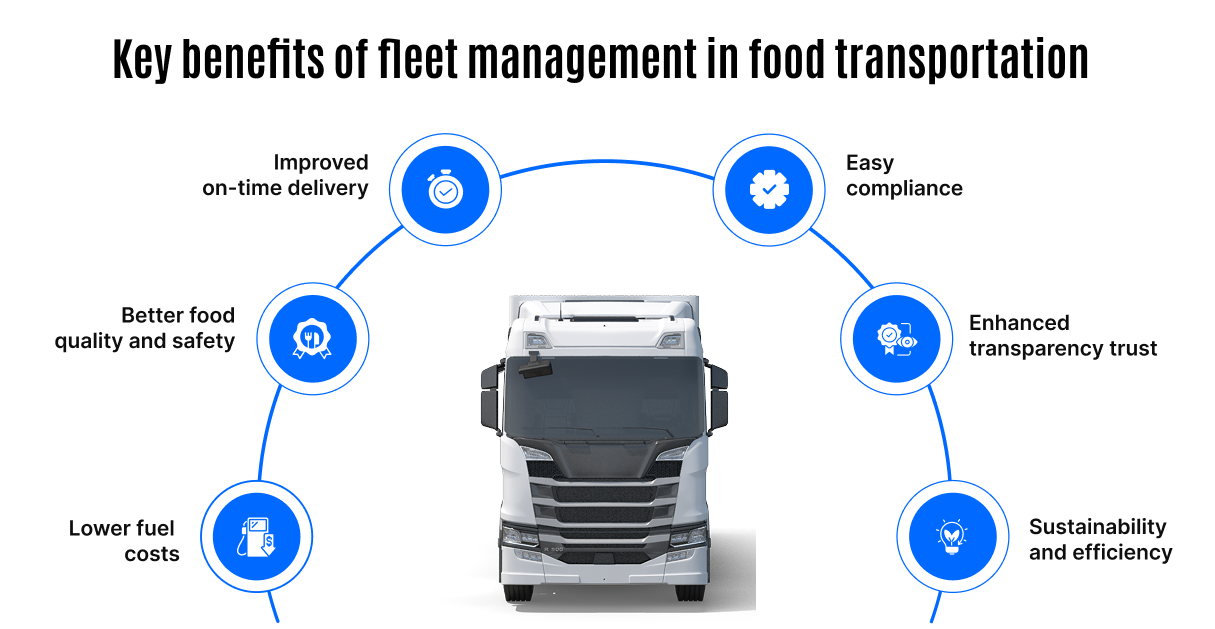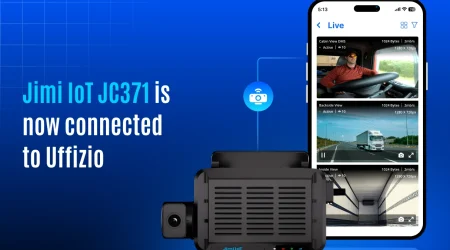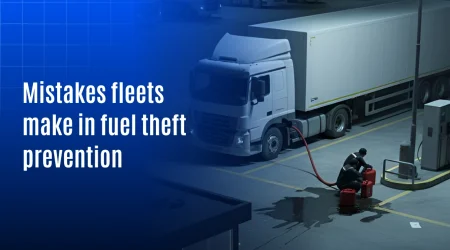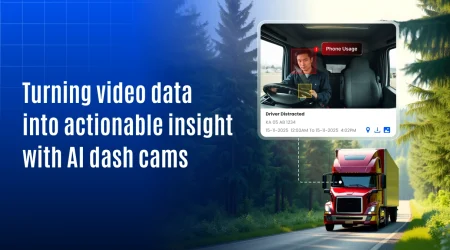How Is Fleet Management Transforming Food Transportation Efficiency?

Fleet management in food transportation plays a vital role in keeping supply chains smooth and reliable. Every day trucks carry fruits, vegetables and frozen foods across highways and cities. Fleet managers ensure goods stay fresh, reach the stores on time and are handled safely before delivery.
Fleet operations involve a complex process behind every smooth delivery. Rising fuel price, poor route planning, temperature change and compliance rules creates major challenges for fleet managers. Even a small delay or technical fault can result in product loss.
In today’s fast- paced market, traditional methods no longer work. That’s why food transport tracking software has become essential. It uses real-time tracking, smart technology and instant alerts, which helps managers to keep fleets on track and ensure every trip from farms to stores delivers food fresh and on time.
The role of fleet management in food transportation
- Temperature monitoring
The system monitors changes in temperature and humidity level inside the truck. If the readings go beyond safe limits and the system alerts managers to prevent food spoilage.
- Route optimization
This software finds the best routes using live location and weather insight. It helps drivers save time, reduce fuel cost and ensure the foods reach the stores on schedule.
- Driver behavior monitoring
Driving habits like harsh braking or sudden acceleration can disturb temperature inside refrigerated trucks. Monitoring these behaviors helps keep drivers safe and operations smooth.
- Vehicle health and maintenance tracking
Track fuel use, engine performance and upcoming maintenance needs. Sends alerts for servicing or inspection, helping fleets to prevent breakdown and stay compliant.
- Load and security control
Smart sensors and e-locks keep cargo balanced and secure, ensuring consistent cooling and safe delivery.
How data visibility helps in food transportation fleets
Fleet managers no longer rely on manual temperature checks or delayed updates. With the help of fleet management software can now view, trace, and predict every delivery using real-time insights.
- Live dashboards: Show real time information on vehicles route, in-truck temperature and delivery status.
- Instant alerts: Sends notification to managers about any movement such as rise in temperature, idle time, or door unlocks during the transit.
- Trip history reports: Automatically record temperature change, routes and trip details for audits and compliance check.
- Predictive analytics: Study past data to find issues like repeated delays and high fuel before they impact performance.
This level of visibility helps food logistics management teams maintain control, improve accuracy, and ensure food reaches stores on time and in perfect condition.
Compliance and food safety assurance
By using accurate data, fleets keep safe temperature, deliver on time, reduce spoilage and build customer trust. Compliance is a major problem in food logistics. Fleet management systems simplify this through:
- Digital trip records: The system keeps record of temperature, trip duration and cleaning schedules.
- Food safety standard : It helps fleets meet international food safety rules such as Food Safety Modernization Act (FSMA), Hazard Analysis and Critical Control Points (HACCP), and ISO 22000 Food Safety Management System that ensures the operations stay compliant and reliable.
- Proof of service: The software geotags every delivery, creating accountability and transparency at each checkpoint.
This transparency strengthens trust with customers, clients, and regulators, ensuring every food transportation fleet meets quality and safety expectations.
Technology integration for food transportation fleets
Fleet management technology has become the backbone of modern food logistics management. With the help of sensors, beacons, and smart data, fleets can easily see vehicles live on the road.
- IoT sensors: Monitor temperature, humidity, and door activity to keep food fresh throughout the trip until it reaches stores.
- AI-powered insights: Detects faults in cold chain trucks or poor route planning so managers can fix the problems before delays happen.
- Cloud-based dashboards:. Allow managers to check live vehicle data anytime, from phone or computer.
- Seamless connectivity: Bring driver performance, vehicle health and delivery updates together with a single platform for smooth management.
This integration links individual vehicle delivery into a smart fleet network. It helps in keeping the shipment stay efficient, fresh and on schedule.
Future trends driving food transportation efficiency
As new technology develops, the food logistics industry continues to evolve, and fleet management makes transportation faster, safer, and efficient.
- AI, blockchain, and IoT
Artificial intelligence and IoT are helping fleets plan better routes, keep the right temperature inside the trucks and save fuel. Blockchain makes the process transparent,keeps records that helps every business check goods from start to finish.
- Government policies
Government initiatives like low-emission zones and sustainable transport routes are driving fleets to adopt smart tools that improve both compliance and performance.
- Sustainable fleet technologies
Refrigerated trucks, solar cooling and hybrid vehicles are using technologies that reduce fuel use and lower cost. Fleet operators using these systems make cold chain operations cleaner, greener, and more affordable.
Conclusion
With the help of technology, fleet management in food transportation has become smarter and more efficient. It allows managers to track vehicles, maintain temperature and plan better routes. Fleet management systems ensure that food reaches stores safely and stays fresh. These tools help reduce fuel consumption and reduce delays, which keeps the entire process on schedule. The future of food transport depends on smart systems that make every journey faster, safer and greener.




